Hairstyles History hair history facts means and women history of hairstyles timeline grooming, fashion, and cosmetics 19th century.
A hairstyle, hairdo, or haircut refers to the styling of hair, usually on the human scalp. Sometimes, this could also mean an editing of facial or body hair. The fashioning of hair can be considered an aspect of personal grooming, fashion, and cosmetics, although practical, cultural, and popular considerations also influence some hairstyles.
Around the same time period, European men often wore their hair cropped no longer than shoulder-length. In the early 17th century, male hairstyles grew longer, with waves or curls being considered desirable.
The male wig was pioneered by King Louis XIII of France in 1624. Perukes or periwigs for men were introduced into the English-speaking world with other French styles in 1660. Late 17th-century wigs were very long and wavy, but became shorter in the mid-18th century, by which time they were normally white. Short hair for fashionable men was a product of the Neoclassical movement.
In the early 19th century the male beard, and also moustaches and sideburns, made a strong reappearance. From the 16th to the 19th century, European women's hair became more visible while their hair coverings grew smaller. In the middle of the 18th century, the pouffe style developed. During the First World War, women around the world started to shift to shorter hairstyles that were easier to manage. In the early 1950s, women's hair was generally curled and worn in a variety of styles and lengths.
In the 1960s, many women began to wear their hair in short modern cuts such as the pixie cut, while in the 1970s, hair tended to be longer and looser. In both the 1960s and 1970s many men and women wore their hair very long and straight. In the 1980s, women pulled back their hair with scrunchies. During the 1980s, punk hairstyles were adopted by many people.
the Venus of Willendorf, now known in academia as the Woman of Willendorf, of a female figurine from the Paleolithic, estimated to have been made between about 28,000 and 25,000 BCE. The Venus of Brassempouy counts about 25,000 years old and indisputably shows hairstyling. Bronze Age In Bronze, Age razors were known and in use by some men, but not on a daily basis since the procedure was rather unpleasant and required resharpening of the tool which reduced its endurance. Ancient history In ancient civilizations, women's hair was often elaborately and carefully dressed in special ways. Women coloured their hair, curled it, and pinned it up in a variety of ways.
They set their hair in waves and curls using wet clay, which they dried in the sun and then combed out, or else by using a jelly made of quince seeds soaked in water, or curling tongs and curling irons of various kinds. Roman Empire and Middle Ages Between 27 BC and 102 AD, in Imperial Rome, women wore their hair in complicated styles: a mass of curls on top, or in rows of waves, drawn back into ringlets or braids. Eventually, noblewomen's hairstyles grew so complex that they required daily attention from several slaves and a stylist in order to be maintained. The hair was often lightened using wood ash, unslaked lime and sodium bicarbonate, or darkened with copper filings, oak-apples or leeches marinated in wine and vinegar. It was augmented by wigs, hairpieces and pads, and held in place by nets, pins, combs and pomade.
Under the Byzantine Empire, noblewomen covered most of their hair with silk caps and pearl nets. From the time of the Roman Empire until the Middle Ages, most women grew their hair as long as it would naturally grow. It was normally little styled by cutting, as women's hair was tied up on the head and covered on most occasions when outside the home with a snood, kerchief or veil; for an adult woman to wear uncovered and loose hair in the street was often restricted to prostitutes. Braiding and tying the hair was common. In the 16th century, women began to wear their hair in extremely ornate styles, often decorated with pearls, precious stones, ribbons and veils.
Women used a technique called "lacing" or "taping," in which cords or ribbons were used to bind the hair around their heads. During this period, most of the hair was braided and hidden under wimples, veils or couvrechefs. In the latter half of the 15th century and on into the 16th century a very high hairline on the forehead was considered attractive, and wealthy women frequently plucked out hair at their temples and the napes of their necks, or used depilatory cream to remove it, if it would otherwise be visible at the edges of their hair coverings.
Working-class women in this period wore their hair in simple styles. In the early 17th century male hairstyles grew longer, with waves or curls being considered desirable in upper-class European men.
The male wig was supposedly pioneered by King Louis XIII of France in 1624 when he had prematurely begun to bald. This fashion was largely promoted by his son and successor Louis XIV of France that contributed to its spread in European and European-influenced countries. The beard had been in a long decline and now disappeared among the upper classes. Perukes or periwigs for men were introduced into the English-speaking world with other French styles when Charles II was restored to the throne in 1660, following a lengthy exile in France.
These wigs were shoulder-length or longer, imitating the long hair that had become fashionable among men since the 1620s. Their use soon became popular in the English court. The London diarist Samuel Pepys recorded the day in 1665 that a barber had shaved his head and that he tried on his new periwig for the first time, but in a year of plague he was uneasy about wearing it:3rd September 1665: Up, and put on my coloured silk suit, very fine, and my new periwig, bought a good while since, but darst not wear it because the plague was in Westminster when I bought it. And it is a wonder what will be the fashion after the plague is done as to periwigs, for nobody will dare to buy any hair for fear of the infection?
That it had been cut off the heads of people dead of the plague. Late 17th-century wigs were very long and wavy, but became shorter in the mid-18th century, by which time they were normally white. A very common style had a single stiff curl running round the head at the end of the hair. By the late 18th century the natural hair was often powdered to achieve the impression of a short wig, tied into a small tail or "queue" behind. Short hair for fashionable men was a product of the Neoclassical movement. Classically inspired male hairstyles included the Bedford Crop, arguably the precursor of most plain modern male styles, which was invented by the radical politician Francis Russell, 5th Duke of Bedford as a protest against a tax on hair powder;
he encouraged his friends to adopt it by betting them they would not. Another influential style was named by the French "à la Titus" after Titus Junius Brutus, with hair short and layered but somewhat piled up on the crown, often with restrained quiffs or locks hanging down; variants are familiar from the hair of both Napoleon and George IV of England. The style was supposed to have been introduced by.
A hairstyle, hairdo, or haircut refers to the styling of hair, usually on the human scalp. Sometimes, this could also mean an editing of facial or body hair. The fashioning of hair can be considered an aspect of personal grooming, fashion, and cosmetics, although practical, cultural, and popular considerations also influence some hairstyles.
History of hairstyles timeline -
The oldest known depiction of hairstyling is hair braiding which dates back about 30,000 years. In history, women's hair was often elaborately and carefully dressed in special ways. From the time of the Roman Empire until the Middle Ages, most women grew their hair as long as it would naturally grow. Between the late 15th century and the 16th century, a very high hairline on the forehead was considered attractive.Around the same time period, European men often wore their hair cropped no longer than shoulder-length. In the early 17th century, male hairstyles grew longer, with waves or curls being considered desirable.
The male wig was pioneered by King Louis XIII of France in 1624. Perukes or periwigs for men were introduced into the English-speaking world with other French styles in 1660. Late 17th-century wigs were very long and wavy, but became shorter in the mid-18th century, by which time they were normally white. Short hair for fashionable men was a product of the Neoclassical movement.
In the early 19th century the male beard, and also moustaches and sideburns, made a strong reappearance. From the 16th to the 19th century, European women's hair became more visible while their hair coverings grew smaller. In the middle of the 18th century, the pouffe style developed. During the First World War, women around the world started to shift to shorter hairstyles that were easier to manage. In the early 1950s, women's hair was generally curled and worn in a variety of styles and lengths.
In the 1960s, many women began to wear their hair in short modern cuts such as the pixie cut, while in the 1970s, hair tended to be longer and looser. In both the 1960s and 1970s many men and women wore their hair very long and straight. In the 1980s, women pulled back their hair with scrunchies. During the 1980s, punk hairstyles were adopted by many people.
Evolution of hairstyles-
Prehistory and history Throughout times, people have worn their hair in a wide variety of styles, largely determined by the fashions of the culture they live in. Hairstyles are markers and signifiers of social class, age, marital status, racial identification, political beliefs, and attitudes about gender. Some people may cover their hair totally or partially for cultural or religious reasons. Notable examples of head covering include women in Islam who wear the hijab, married women in Haredi Judaism who wear the sheitel, married Himba men who cover their hair except when in mourning, Tuareg men who wear a veil and baptized men and women in Sikhism who wear the dastar. Paleolithic The oldest known reproduction of hair braiding lies back about 30,000 years:the Venus of Willendorf, now known in academia as the Woman of Willendorf, of a female figurine from the Paleolithic, estimated to have been made between about 28,000 and 25,000 BCE. The Venus of Brassempouy counts about 25,000 years old and indisputably shows hairstyling. Bronze Age In Bronze, Age razors were known and in use by some men, but not on a daily basis since the procedure was rather unpleasant and required resharpening of the tool which reduced its endurance. Ancient history In ancient civilizations, women's hair was often elaborately and carefully dressed in special ways. Women coloured their hair, curled it, and pinned it up in a variety of ways.
They set their hair in waves and curls using wet clay, which they dried in the sun and then combed out, or else by using a jelly made of quince seeds soaked in water, or curling tongs and curling irons of various kinds. Roman Empire and Middle Ages Between 27 BC and 102 AD, in Imperial Rome, women wore their hair in complicated styles: a mass of curls on top, or in rows of waves, drawn back into ringlets or braids. Eventually, noblewomen's hairstyles grew so complex that they required daily attention from several slaves and a stylist in order to be maintained. The hair was often lightened using wood ash, unslaked lime and sodium bicarbonate, or darkened with copper filings, oak-apples or leeches marinated in wine and vinegar. It was augmented by wigs, hairpieces and pads, and held in place by nets, pins, combs and pomade.
80s women's hairstyles-
Under the Byzantine Empire, noblewomen covered most of their hair with silk caps and pearl nets. From the time of the Roman Empire until the Middle Ages, most women grew their hair as long as it would naturally grow. It was normally little styled by cutting, as women's hair was tied up on the head and covered on most occasions when outside the home with a snood, kerchief or veil; for an adult woman to wear uncovered and loose hair in the street was often restricted to prostitutes. Braiding and tying the hair was common. In the 16th century, women began to wear their hair in extremely ornate styles, often decorated with pearls, precious stones, ribbons and veils.
Women used a technique called "lacing" or "taping," in which cords or ribbons were used to bind the hair around their heads. During this period, most of the hair was braided and hidden under wimples, veils or couvrechefs. In the latter half of the 15th century and on into the 16th century a very high hairline on the forehead was considered attractive, and wealthy women frequently plucked out hair at their temples and the napes of their necks, or used depilatory cream to remove it, if it would otherwise be visible at the edges of their hair coverings.
Men's hairstyles through the centuries-
The male wig was supposedly pioneered by King Louis XIII of France in 1624 when he had prematurely begun to bald. This fashion was largely promoted by his son and successor Louis XIV of France that contributed to its spread in European and European-influenced countries. The beard had been in a long decline and now disappeared among the upper classes. Perukes or periwigs for men were introduced into the English-speaking world with other French styles when Charles II was restored to the throne in 1660, following a lengthy exile in France.
These wigs were shoulder-length or longer, imitating the long hair that had become fashionable among men since the 1620s. Their use soon became popular in the English court. The London diarist Samuel Pepys recorded the day in 1665 that a barber had shaved his head and that he tried on his new periwig for the first time, but in a year of plague he was uneasy about wearing it:3rd September 1665: Up, and put on my coloured silk suit, very fine, and my new periwig, bought a good while since, but darst not wear it because the plague was in Westminster when I bought it. And it is a wonder what will be the fashion after the plague is done as to periwigs, for nobody will dare to buy any hair for fear of the infection?
That it had been cut off the heads of people dead of the plague. Late 17th-century wigs were very long and wavy, but became shorter in the mid-18th century, by which time they were normally white. A very common style had a single stiff curl running round the head at the end of the hair. By the late 18th century the natural hair was often powdered to achieve the impression of a short wig, tied into a small tail or "queue" behind. Short hair for fashionable men was a product of the Neoclassical movement. Classically inspired male hairstyles included the Bedford Crop, arguably the precursor of most plain modern male styles, which was invented by the radical politician Francis Russell, 5th Duke of Bedford as a protest against a tax on hair powder;
he encouraged his friends to adopt it by betting them they would not. Another influential style was named by the French "à la Titus" after Titus Junius Brutus, with hair short and layered but somewhat piled up on the crown, often with restrained quiffs or locks hanging down; variants are familiar from the hair of both Napoleon and George IV of England. The style was supposed to have been introduced by.

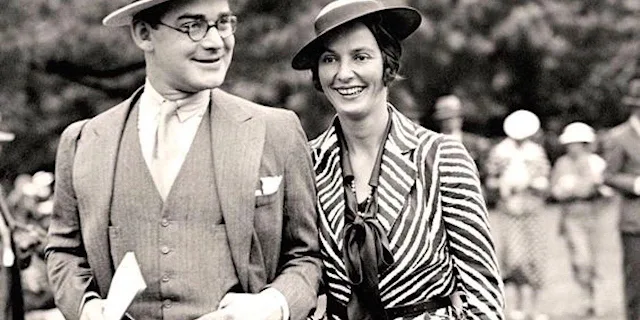
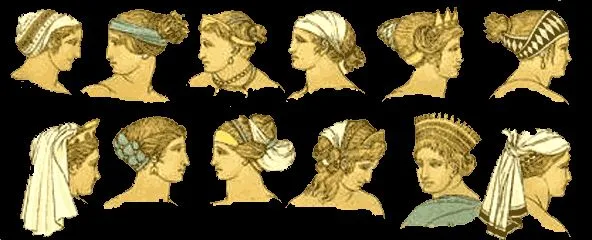

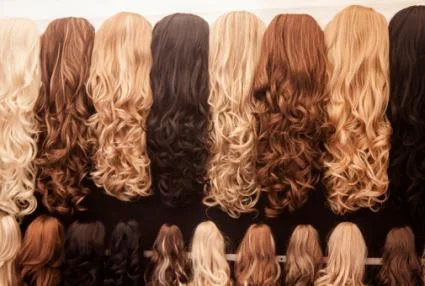

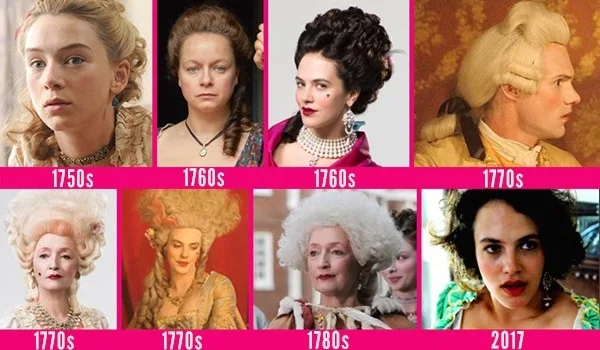
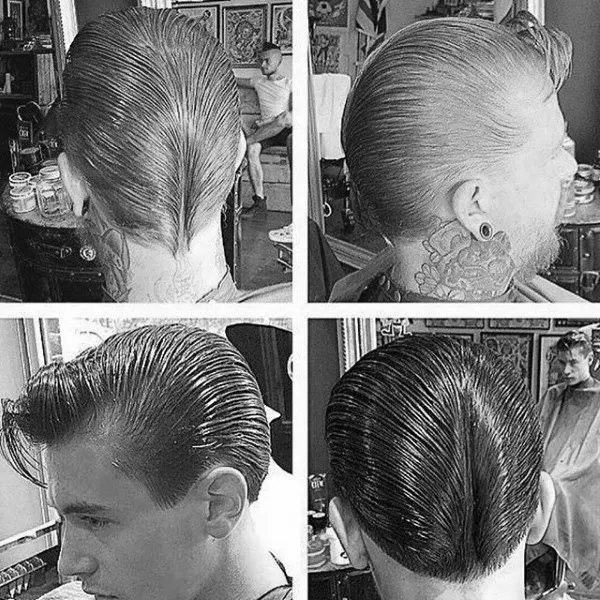



Comments
Post a Comment